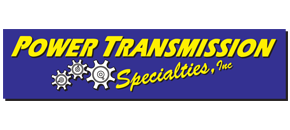FAQs
Power Transmission Specialties, Inc.
Have a power transmission-related question? Power Transmission Specialties, Inc. has the answer. Check out these FAQs and give us a call today for more information!
-
Are gearboxes and transmission the same thing?
While the terms "transmission" and "gearbox" are frequently used interchangeably, it's important to note that a gearbox is actually a component of a transmission. The transmission is responsible for transferring power from the engine to the driveshaft, which then sends that power to the wheels. Within the transmission, the gearbox contains the gears that regulate how much power is transmitted to the driveshaft through revolutions.
-
Why is my gearbox oil leaking?
Frequently, leaks in a gearbox are caused by defective seals. Given that the transmission of your vehicle, which encases the gearbox, can reach temperatures of up to 90 degrees Celsius, it's not uncommon for seals to loosen and crack due to regular wear and tear. The aluminum or steel pipeline can also crack, leading to leakage, as can the transmission pump. Fortunately, these issues are usually resolved quickly.
-
What is the difference between using a shield or a seal as a ball bearing closure?
Shields or seals are commonly used to maintain lubrication and prevent contaminants from entering the bearing. The main difference between the two is that a shield only contacts the outer ring and not the inner ring, while the seal encounters both. This results in a lower torque or drag with a shield than with a seal. However, seals provide a higher level of protection from contamination. There are various materials and configurations available for both shields and seals.
If you have any special requirements, please feel free to contact Power Transmission Specialties, Inc. for technical assistance.
-
What causes bearing noise?
The noise produced by a bearing is dependent on both the bearing itself and how it is utilized. ABEC rating does not typically have an impact on bearing noise, and there is no universal industry standard for acoustic noise among bearing manufacturers. Several external factors that may influence bearing noise include the type of lubricant used, excessive bearing load, and incorrect installation procedures.
-
What is the operating temperature of the bearing?
Standard bearings are suitable for continuous operation in a temperature range of -100°F to 375°F.
-
How to choose the right bearing for your application:
When selecting a bearing, there are several factors you should consider:
1. Determine the type and amount of bearing load that your application will place on the bearing. Small-to-medium-sized loads typically work best with ball bearings, while heavy load applications may work best with roller bearings.
2. Determine the rotational speed of your application. Higher speeds (RPM) typically work best with ball bearings, while lower speeds usually work best with roller bearings.
3. Consider the runout and rigidity that your application requires. If the application only allows for small deviations to occur, then a ball bearing is likely the best choice.
4. Choose the right lubrication for your bearing's needs. For high-speed applications, calculate your n*dm value, and if it's higher than the grease max speed, then grease may not provide sufficient lubrication. Other options, such as oil misting, may be more appropriate. For low-speed applications, an oil bath is a good choice.
-
How do you know what size v belt to buy?
Please measure around the outside diameter (OD) of the pulleys and get in touch with Power Transmission Specialties, Inc. We'll assist you further with your pulley needs.
-
How long should my belt last?
The lifespan of a belt can vary depending on several factors such as the application, whether it will be used indoors or outdoors, and the required tension levels. To determine the expected lifespan of your belt, it's best to consult Power Transmission Specialties, Inc.
Business Hours
- Mon - Fri
- -
- Sat - Sun
- Closed

Share On: